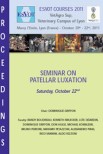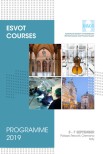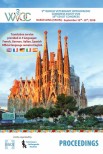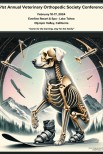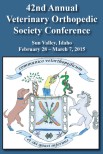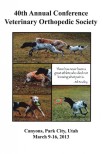Objective: To describe specific methods of plate application and to report outcomes for patients treated with the OrthoLineTM system.
Study design: Retrospective case series.
Animals: A total of 65 dogs, and six cats.
Methods: Medical records of dogs and cats treated with the OrthoLineTM system were reviewed. Cases with <12 weeks follow-up, significant comorbidities, a revision procedure, or those receiving the study implant in combination with another system were excluded. Construct application characteristics (plate span [%], plate span ratio, screw hole density, and plate working length [cm]) were calculated and compared between fracture locations. Patient outcomes included fracture healing, owner assessed outcome (telephone interview) and reported complications from owner interviews and medical records.
Results: A total of 75 fractures in 71 cases were treated with 77 plates. Clinical union was noted in 57/61 fractures (93.4%) at a range of 1.7-19.7 weeks. Owner assessed outcome (n = 51) was graded as full or acceptable for all cases. Major complications included implant failure (n = 1), implant infection (n = 2), and intraoperative malreduction with revision (n = 1). Plate span of radial (46.6%) and ulnar (33.0%) constructs were both lower compared to femoral (73.3%) (p < .001) constructs, and ulnar constructs were also lower compared to tibial (61.7%) constructs (p = .004).
Conclusion: The OrthoLineTM system produced acceptable radiographic healing, complication rates, and owner assessed outcomes. Shorter plate spans in the radius and ulna were well tolerated.
Clinical significance: The OrthoLineTM system is a promising alternative for fracture repair in dogs and cats.
